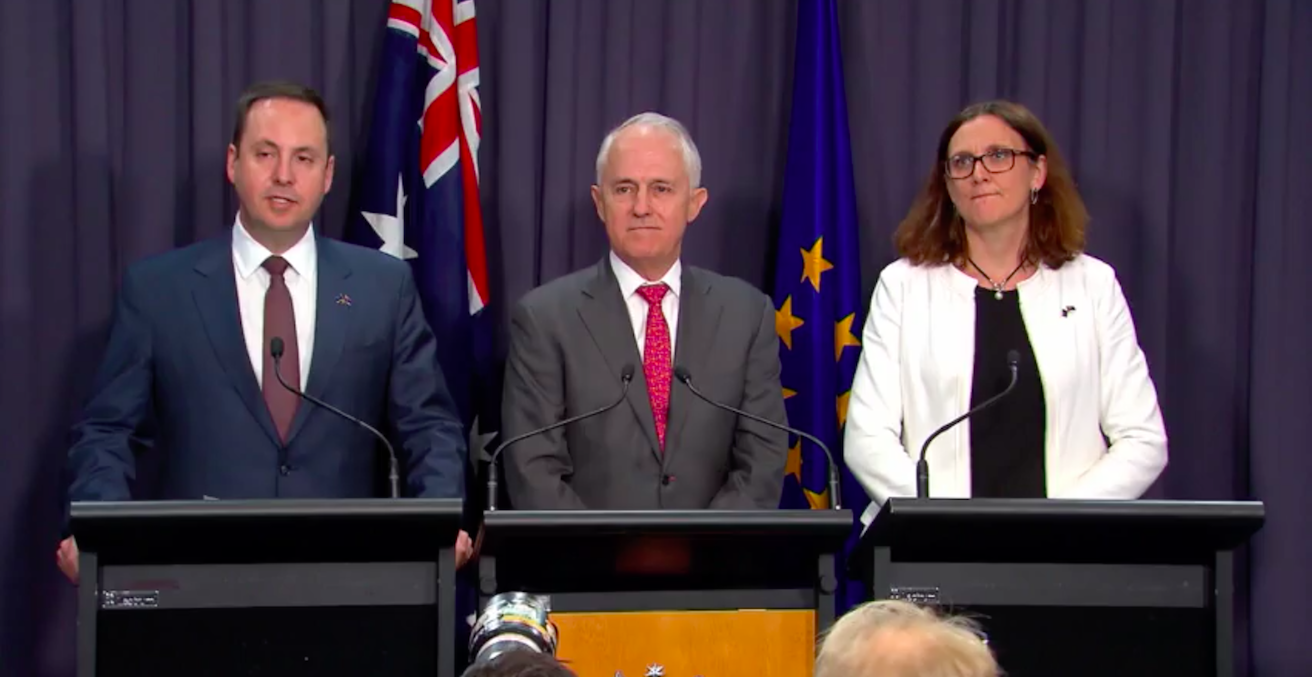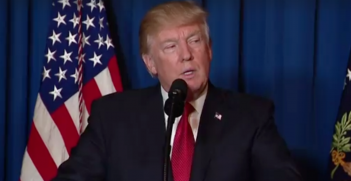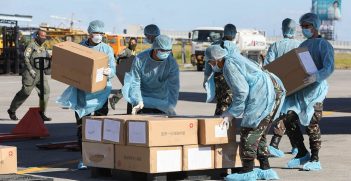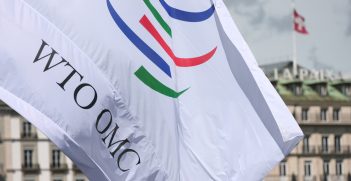EU-Australia FTA: From Trade Tensions to Fruitful Engagement

EU-Australia free trade agreement negotiations have been officially launched this week with the arrival of the EU Trade Commissioner in Canberra. Relations are more fruitful between EU and Australia as a result of changes to the range and depth of both interests and values, although some past tensions still resonate.
Trade tensions framed the parameters of the relationship from the 1960s until the 1990s. They were at the basis of perceptions of the EU as protectionist in agricultural trade both bilaterally and multilaterally. Both Australia’s close alignment with, and strategic dependence on, the USA and its drive to engage with its own region meant that the EU was not a priority as a partner. Past trenchant critiques of the EU’s agricultural policy characterised engagement. Neither Australia nor the EU set out to collide, yet each had a hierarchy of interests that did not converge.
Increased alignment came about as Australia broadened its engagement beyond the USA and the Asia-/Indo-Pacific, and as the EU developed into an international actor with clout, influence and impact in areas that are core to Australian economic and diplomatic interests.
Impediments to engagement
The past is discernible in Australia’s relationship with the EU due to two key factors. The first is the tension regarding agricultural trade, characterised by Australian criticism of EU agricultural trade protectionism since 1973. The emphasis on agriculture since the UK’s accession to the then European Economic Community (EEC) has meant that the memory of Australian primary goods being excluded from European markets still resonates. The asymmetry of the trade relationship, whereby Australia had a trade deficit with the EU, has further formed part of a negative domestic perception of the EU. The second factor is the influence of the UK, which had a substantial impact on how Australian policy communities perceived the EU, through a largely Eurosceptic lens of a country that was reluctant to embrace many aspects of the EU’s governance and values. These two factors have contributed to perceptions of the EU as obstructionist.
In the four decades prior to the late 1990s, engagement was characterised by tense encounters and diplomatic quarrels regarding agricultural trade. Forthright criticism emanated from Canberra regarding the Common Agricultural Policy’s distortion of world markets from the 1960s onwards. This condemnation was evident among the policymaking community and the media, and was consistent with a widespread perception of the EU as a type of bully in the global trading playground
This perception came about for three main reasons. Firstly, Australia, as a major world agricultural and agri-food exporter, sought a level playing field in international markets. Secondly, until British accession to the EEC, Australia had depended on the UK as a major export market for agricultural and agri-food produce. Thirdly, the Common Agricultural Policy dominated EU policymaking both internally and in its relationships with third countries.
Although two-way trade has long been strong, it is asymmetrical, with a large Australian trade deficit. The EU did not seek or depend on Australian exports. Indeed, there was little EU official attention paid to Australia, which was primarily regarded as an unhelpful critic of agricultural protectionism in both bilateral and multilateral forums. There was relatively little to drive an exploration of joint policy options in other policy domains, until the 1990s.
Drivers of engagement: changing perceptions
Australia’s interest in the EU has altered as the EU became an important political, foreign policy and security partner. The Australian hierarchy of the USA, China, the Association of Southeast Asian Nations (ASEAN) and FTAs with Asia now also comprehends the EU. This is due to a number of factors, with cooperation ranging across multiple sectors and common concerns. Certainly, the relative retreat by the USA under President Trump from both multilateralism and engagement in the region has meant that Australia is actively strengthening ties with other partners.
The relationship is flourishing in both material interests and ideational values. It no longer has a backstory of the burden of memory, but a focus on shared interests and values, and the strategic management of Australian interests. The relationship is now characterised by increased summitry and symmetry—summitry in bilateral meetings and multilateral and regional encounters, including the Asia Europe Meeting, and symmetry as the trade relationship moves towards the negotiation of an FTA. Although the past still echoes, Australia has achieved fruitful engagement that enhances its national interests and international trade commitments. At the same time as Australia developed a regional strategy towards its own region, it also achieved a new bilateral regional relationship with a major regional actor—the EU.
Socialisation at many levels and in summitry serves to undermine potential negative perceptions of each other’s negotiating positions. Equally the development of strong personal ties among leaders. A major driver has been a willingness to develop dialogues, which often developed into cooperative agreements or regular consultations and joint committees.
The FTA is perceived as an effective means of reaching out to each other. The EU’s Commissioner for Trade, Cecilia Malmström, stated during a European Parliament debate on 25 October 2017 on the negotiating mandate for trade negotiations with Australia and New Zealand that: ‘This is another part of our work to build bridges, not walls, with a circle of friends who share our values and this is also very much a political message, as well as an economic and trade policy question’.
The present: material and ideational concerns
When we reflect on Australia and the EU, it may be useful to regard them as critical friends that share many interests yet express criticism of each other regarding climate change or agriculture and the Euro, for example. Perceptions of the EU in Australia have become more reflective of firm cooperaion than in the past, with the EU not simply regarded as an agricultural trade irritant.
The decision to launch bilateral FTA negotiations reflects the current strong and solid economic relationship, and consolidates the momentum created by the Framework Agreement.
It also builds on leaders’ cooperation and officials’ dialogues across a number of sectors and specific agreements. An FTA will ensure that the trade and investment relationship reaches its full potential by removing trade barriers and expanding service linkages and investment ties, while enhancing ‘regulatory cooperation in specific sectors of interest to business’.
The past legacy of agriculture will have relevance in the FTA negotiations as Australian primary producers seek increased market access (lamb/sheep meat, beef and goat meat, for example) and as some EU primary consumers seek to limit such increased access, particularly in France.
But there is mutual recognition of interests. There is some alignment of values and norms. The interlocutors are developing the habit of cooperation. As reliable partners yet critical friends, they appear to be on track, with active policy community engagement, cooperative relationships and language reflecting increased mutual understanding.
Philomena Murray is professor in the School of Social and Political Sciences at the University of Melbourne.
This article is an edited extract of her journal article titled “Australia’s engagement with the European Union: partnership choices and critical friends” published in Volume 72, Issue 3 of the Australian Journal of International Affairs.





